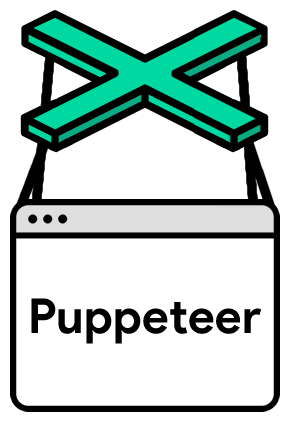Capture Method
- puppeteer:
Puppeteer operates by controlling a headless version of Chrome or Chromium. It can capture full-page screenshots or specific elements, and it handles complex rendering scenarios, including JavaScript-heavy pages, making it highly versatile for automated testing and web scraping.
- html2canvas:
html2canvas captures screenshots by rendering the DOM elements into a canvas element in the browser. It converts the visible parts of the web page into an image, allowing for customization of the captured area, but may struggle with cross-origin images and complex CSS.
- modern-screenshot:
modern-screenshot utilizes the browser's native screenshot capabilities, providing a more reliable and straightforward approach to capturing web pages. It supports modern web standards and is designed for ease of use, making it suitable for quick implementations.
- screenshot-desktop:
screenshot-desktop captures the user's screen or specific application windows using native OS capabilities. It is not limited to web content and can be used in desktop applications, making it unique among the listed libraries.
Use Case
- puppeteer:
Perfect for automated testing, web scraping, or generating screenshots of web applications in various states. It is highly effective for scenarios requiring interaction with web pages before capturing the screenshot.
- html2canvas:
Best suited for client-side applications where you want to capture specific elements of a web page, such as user-generated content or visual states without needing server-side processing.
- modern-screenshot:
Ideal for developers looking for a simple and effective way to capture web pages or elements in modern web applications, especially when ease of integration is a priority.
- screenshot-desktop:
Designed for applications needing to capture the entire desktop or specific application windows, making it useful for desktop software or when integrating with user workflows.
Performance
- puppeteer:
Highly performant for headless browser operations, but can be resource-intensive when running multiple instances or capturing complex pages. It allows for fine-tuning to optimize performance.
- html2canvas:
Performance can vary based on the complexity of the DOM and styles being captured. It may struggle with large pages or heavy graphics, leading to longer rendering times.
- modern-screenshot:
Offers good performance for capturing screenshots quickly, leveraging modern browser capabilities without significant overhead, making it efficient for most use cases.
- screenshot-desktop:
Performance is generally good, but it may depend on the system's capabilities and the resolution of the captured area. It is designed to be efficient for desktop applications.
Cross-Browser Support
- puppeteer:
Supports Chrome and Chromium primarily, with some capabilities for Firefox. It is designed for modern web applications and may not work with older browsers.
- html2canvas:
Primarily supports modern browsers, but may have limitations with older versions or specific browser quirks, especially regarding CSS and cross-origin images.
- modern-screenshot:
Focuses on modern browsers, ensuring compatibility with the latest web standards, but may not support older browsers.
- screenshot-desktop:
Cross-platform support for Windows, macOS, and Linux, making it versatile for desktop applications, but it is not applicable for web-based screenshots.
Ease of Use
- puppeteer:
While powerful, Puppeteer has a steeper learning curve due to its extensive capabilities and configuration options. It may require more time to set up for complex tasks.
- html2canvas:
Relatively easy to use for developers familiar with JavaScript and DOM manipulation. It requires minimal setup and can be integrated quickly into existing projects.
- modern-screenshot:
Designed with simplicity in mind, modern-screenshot offers a straightforward API, making it easy for developers to implement without extensive documentation.
- screenshot-desktop:
Easy to use for capturing desktop screenshots, but may require additional permissions or configurations depending on the operating system.














